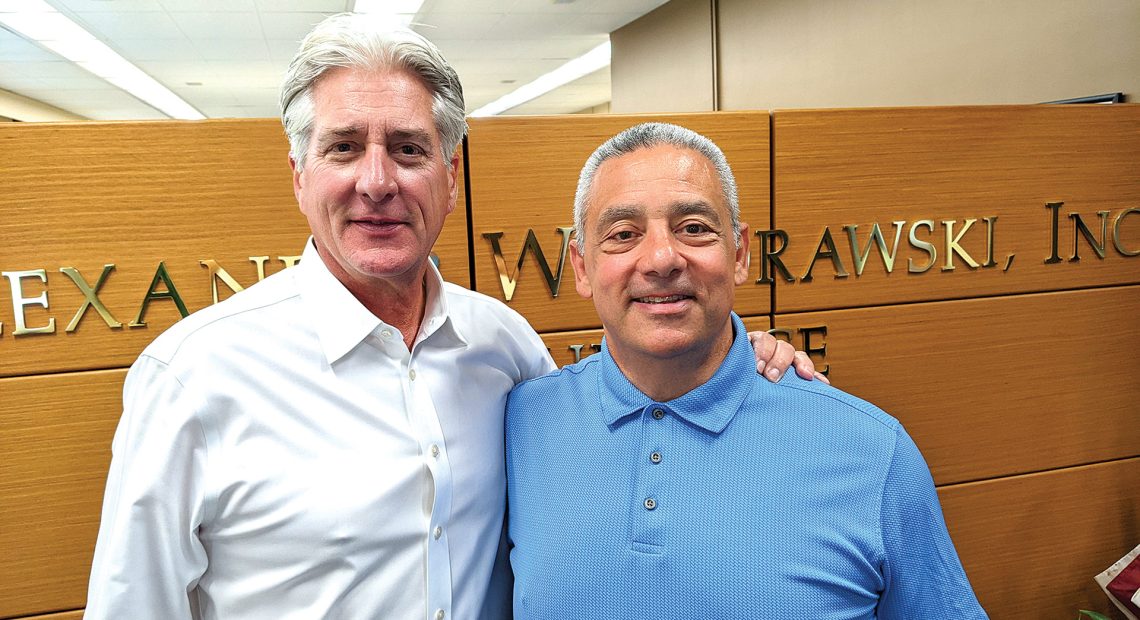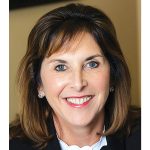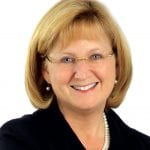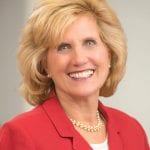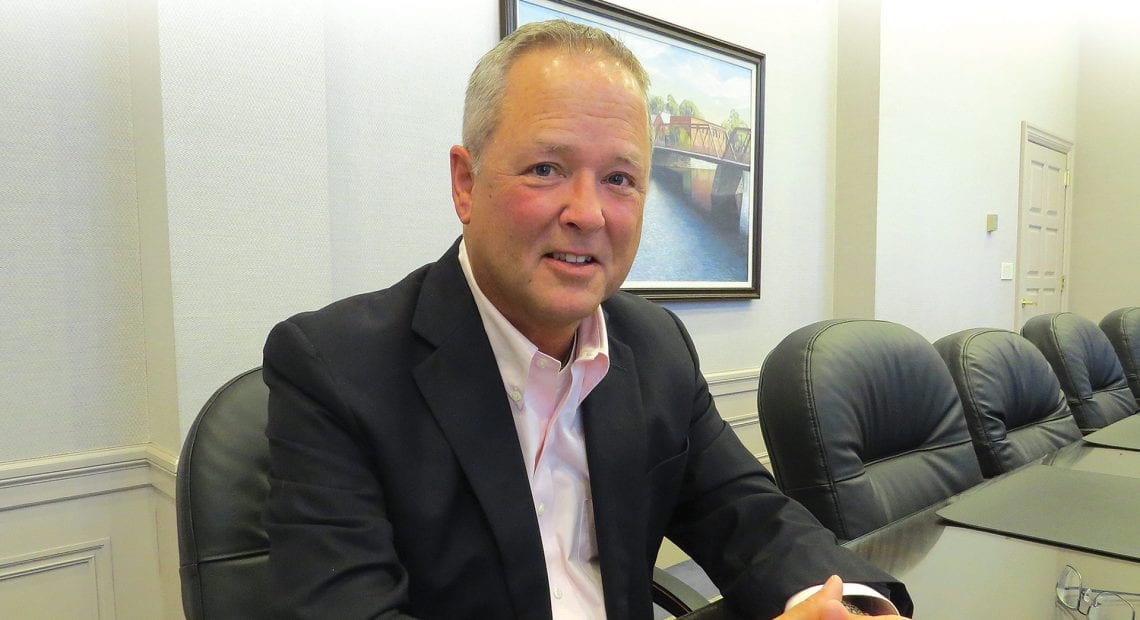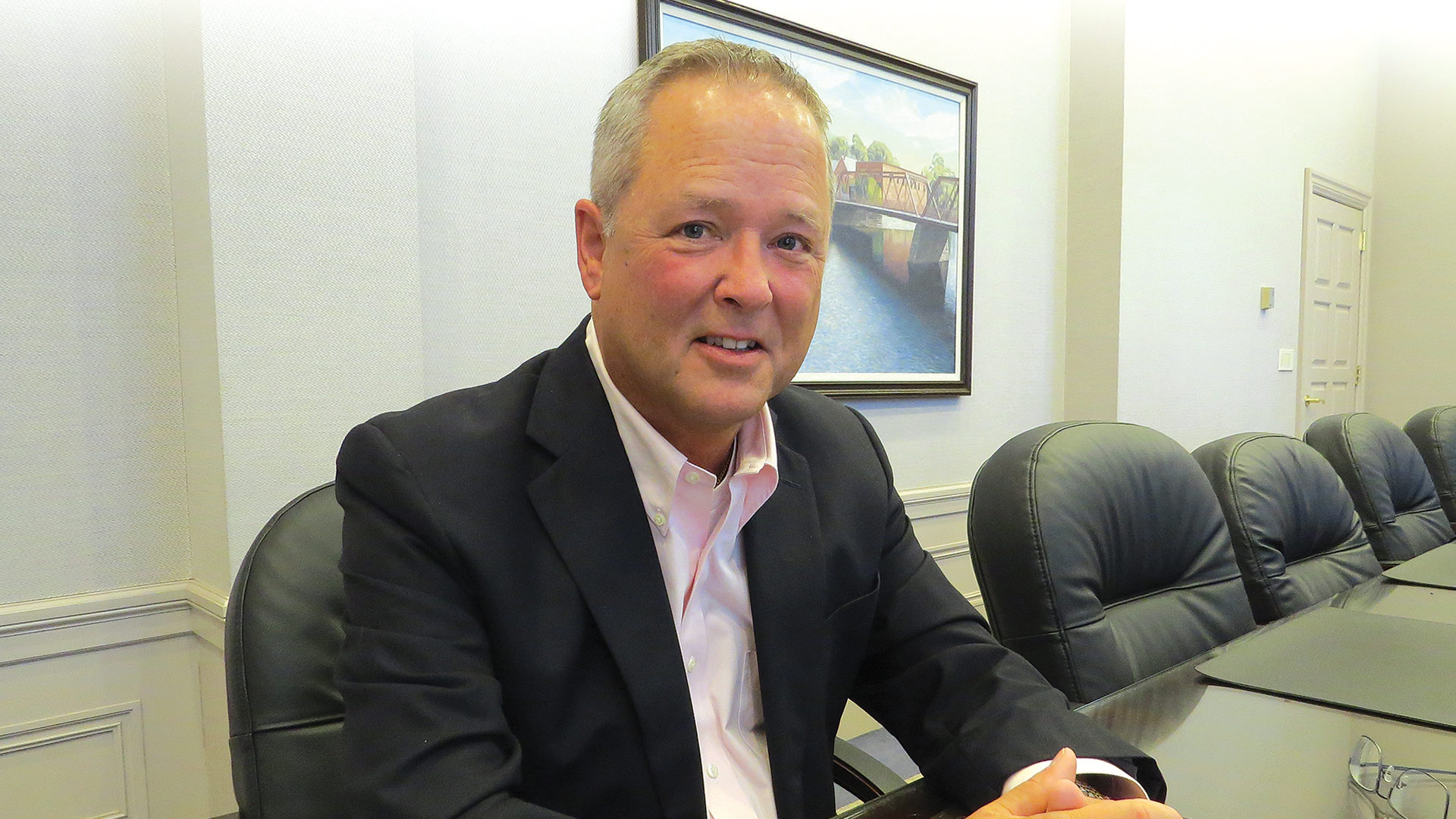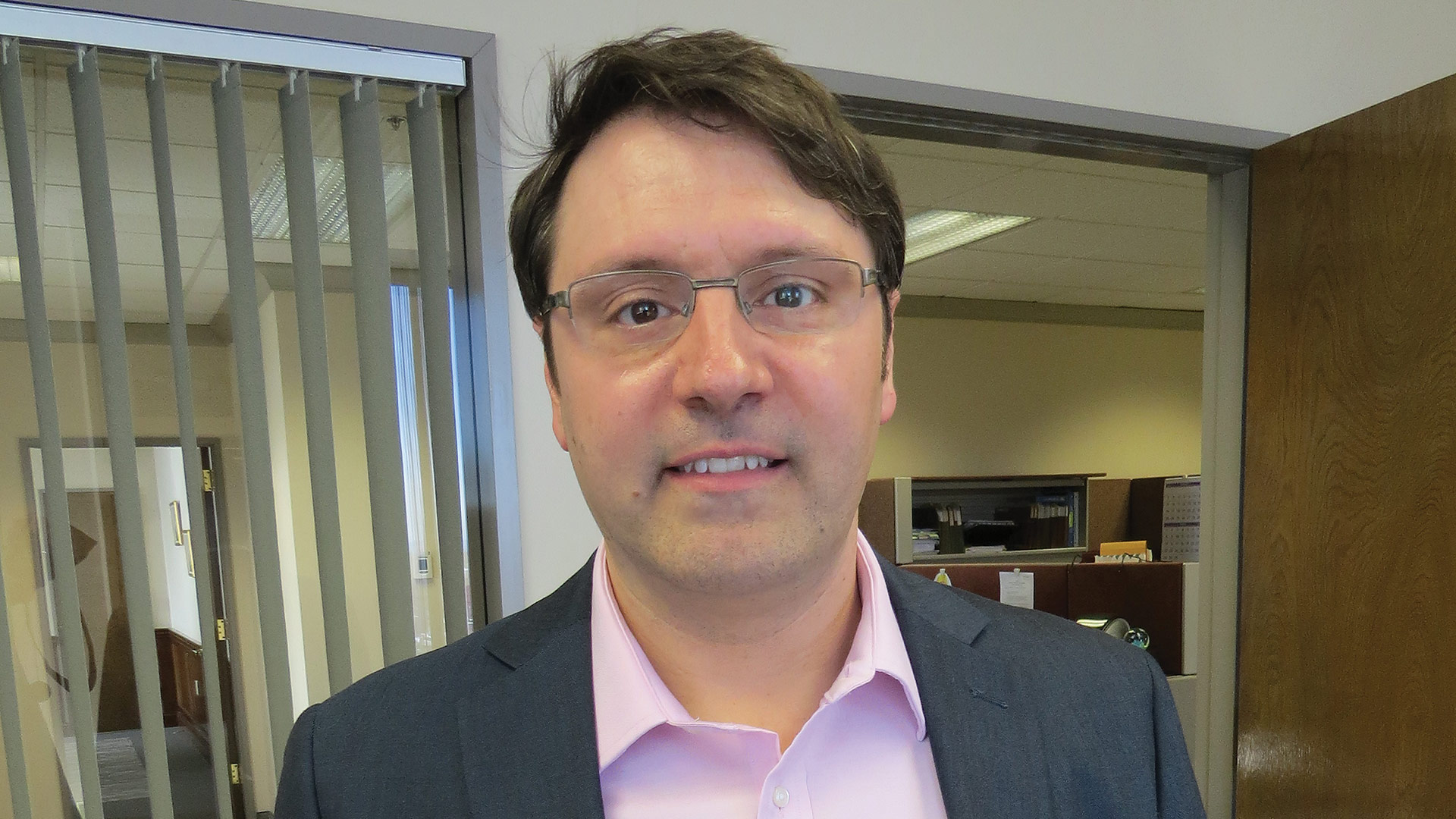Beyond the Paycheck

Vinnie Daboul (right, with Bob Borawski) says employee leverage has made things “really, really different” when crafting a benefits package.
Allison Ebner called it “a little bit of a wavy ocean at the moment.”
She was referring to the shifting calculus within companies of what benefits to offer employees and how to structure them, but the description is equally apt for the workforce challenges that are making those discussions just a little more important these days.
“We have employees that were coming out of the pandemic last year looking to add benefits in the wellness space, with financial wellness, health and wellness, and then non-traditional things like tuition reimbursement and pet insurance, which have been in play for a number of years. Those were really amped up and on the table,” said Ebner, president of the Employers Assoc. of the NorthEast (EANE).
With employers starting to worry about a recession, however, “some of that has been pulled back a little bit,” she continued. “Certain core benefits — health care, dental, vision … the practical pillars of benefits — no one’s touching those, even though some employers are seeing double-digit increases in health. But a lot of employers are saying, ‘hey, wait a minute, we want to do X, Y, and Z, but maybe let’s hold off on that a little bit.’”
The problem, of course, is that — even at a time when employers worry about economic tides — workers still have leverage due to a staffing crunch that has enveloped most sectors. And in many cases, benefits are a huge part of job seekers’ decision-making process.
Vinnie Daboul, benefits consultant with Borawski Insurance in Northampton, told BusinessWest he recently spoke with someone who had just turned down a job offer.
“They’re with a company right now with unlimited PTO and 16 weeks of maternity paid at 100%. They have a job offer from another company with unlimited PTO, but six weeks of maternity. And they’re like, ‘nah, it’s a game changer. I can’t do it. I’m not taking that job.’ Today, things are really, really different.
“Some people really want pet insurance. Some people say, ‘I need help repaying my student loans.’ You’ve got to offer personalization of benefits to employees. That’s the most effective way to attract new staff.”
“Think about this,” he went on, gesturing at Bob Borawski, the agency’s president. “Five years ago, if Bob walked in here and said to all of us, ‘hey, I just want you in the office on Tuesday, Wednesday, and Thursday, and you can stay home on Monday and Friday,’ he’d be a hero. Today, post-COVID, you say to your employees, ‘hey, we want you in the office on Tuesday, Wednesday, and Thursday, and you can stay home Monday and Friday,’ they’re like, ‘no way — we have to do what?’ It has drastically changed.”
Ebner said employers can no longer neglect the overall employee experience and employee value proposition, or, as she put it, “what are you going to give employees in exchange for what they do?
“That has become much more personalized,” she noted. “Some people really want pet insurance. Some people say, ‘I need help repaying my student loans.’ You’ve got to offer personalization of benefits to employees. That’s the most effective way to attract new staff.”
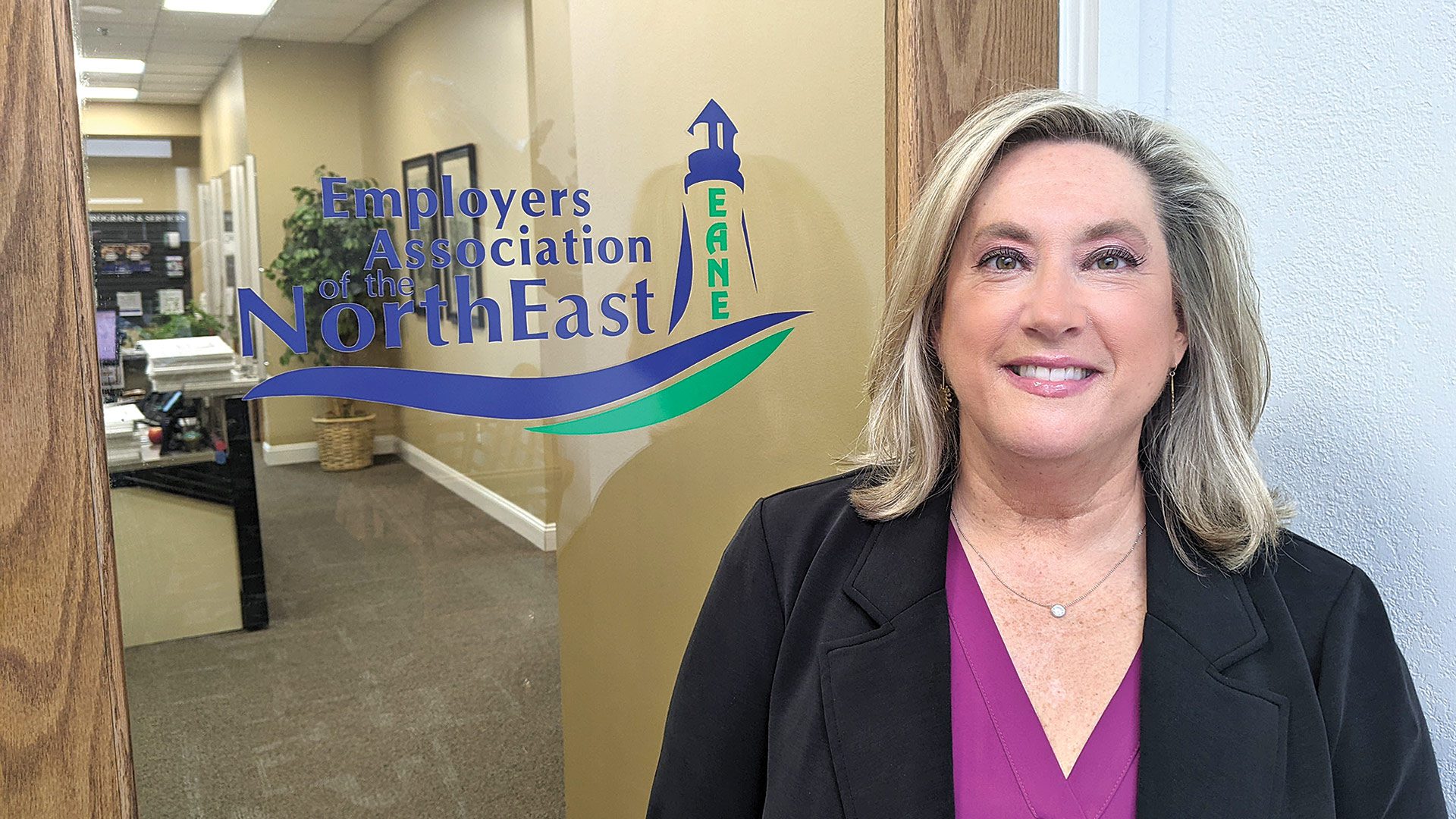
Allison Ebner says employers can no longer neglect the employee value proposition.
That said, Ebner went on, employers must consider several factors: the state of their industry, what fiscal shape they’re in, and how aggressive they want to be competing for talent. Those are reasonable, bottom-line considerations. But they become more complicated at a time when employees increasingly understand their value — and want to be compensated for it, in ways that go beyond the paycheck.
Wants and Needs
Daboul said it’s not a one-size-fits-all equation when it comes to crafting a benefits package that works for a company’s bottom line but still satisfies — and, just as important, attracts — employees.
“A lot depends on the client size,” he said. “If we’re engaging with a 10-employee client, it’s quicker. I don’t want to say it’s more transactional for them, but if I have 10 employees, I just need to get something in place. I want medical, dental, vision, and a life policy. I don’t want to say it’s easy, but it’s a different engagement.
“A lot of our clients are larger clients,” he went on, and with those employers, it’s important to sit down and build a comprehensive benefits strategy — and not just talk about it once or twice a year, but regularly discuss changing situations.
“We look at the population and do risk analysis on that population, based on the changing demographics, aging, so many different things. And we take the financial condition of the company into consideration too. How are they doing? Times have been tough for some companies; they’re laying off. Is the benefit package OK? Is it secure? We look at funding.
“Employers are looking at every avenue to accomplish three key things: make sure their expenses stay down, make sure they create a benefit package that helps them recruit and retain, and make sure the benefits are incredibly competitive.”
“So, with anything to do with the benefit program,” he went on, “it’s not just the product, but, strategically, where do you want to be this year? Where do you want to be five years from now? Those are the conversations we try to have with our clients.”
That said, Daboul agreed with Ebner that clients’ strategies around “core benefits,” as he called them — medical, dental, group life, and disability — haven’t changed much, though fewer companies are pushing to add life and disability these days. As for health insurance, the big change for employers is rising costs, particularly in this region, where a few large insurers dominate, and the lack of competition drives prices up.
As a result, employers have to decide how much to pay into a health plan and how much their employees will pay, in addition to options like higher deductibles, health savings accounts, and self-insurance.
“There are things we wouldn’t have seen five, 10, 20 years ago,” he said. “I mean, they were in the market, but when I started at MassMutual as an underwriter in 1987, I would have been fired if I self-insured a client under 500 bucks. You just wouldn’t do that.”
At the end of the day, he explained, “employers are looking at every avenue to accomplish three key things: make sure their expenses stay down, make sure they create a benefit package that helps them recruit and retain, and make sure the benefits are incredibly competitive.”
It can be a tough balance, but creativity and flexibility can help. Remote and hybrid work options, as well as generous paid time off, can appeal to a sense of work-life balance. Meanwhile, Ebner said, many employers have turned to spending accounts targeted to specific benefits — say, $1,000 per year for wellness expenses such as gym memberships and fitness equipment, or $1,000 for learning and development, such as classes or training events that the organizaion pays for.
“Lifestyle accounts have gained in popularity because they allow employees to choose what they want to spend it on, and that delivers a personalization of benefits,” she noted. “Again, we’re seeing employers re-evaluate and continuously revamp based on the value proposition and the fiscal state of the organization, which is affected heavily by things going on in the market. If they’re taking a conservative approach to the recession conversation, they’re going to maximize the benefits they do have.”
Kim Adams, a Vermont-based senior account manager at OneDigital, a national insurance, financial services, and HR platform, wrote recently that personalization and malleability have become more important in the world of benefits.
“The American workforce is currently home to five distinct generations working shoulder-to-shoulder,” she noted, and a generous 401(k) match may not be as valuable to recent college graduates bogged down with student loans, while a Gen-X employee may choose to decline healthcare coverage because their spouse has a richer plan, resulting in the company spending much less on their benefits than for most other employees.
“To combat this uneven distribution of benefits resources (and perhaps unintentionally ageist outcomes), employers may find it helpful to reconceptualize benefits as a malleable pool of resources that individual employees may allocate according to their specific needs,” Adams continued, noting options ranging from pet insurance to paying to attend a conference. “This personalized approach to benefits can effectively foster more equitable outcomes, boost employee morale, and broadcast a positive corporate culture.”
Daboul also noted the shift toward non-traditional benefits like pet insurance, tuition reimbursement, and identity-theft protection, and added that traditional products like 401(k) accounts and long-term-care insurance may be on the rise due to projections about the life expectancy of younger generations.
“I was listening to a podcast the other day,” he said, “and they’re projecting that kids being born today will have a life expectancy of 105.”
Give and Take
Even pre-COVID, Daboul said, the benefits calculus was changing at many companies. Now, the conversation can’t be avoided.
“As an employer today, thinking about my benefit strategy, what’s going to be my platform? How am I going to deliver the benefits to everybody? Who do I include? Because now I have contractors, I have part-time employees, I have seasonal employees. It’s drastically different, and the demographic you’re now delivering it to is a very different demographic. It’s a younger demographic, and they’re not as connected or committed to the employer.”
Ebner said the impact of the Great Resignation has eased up a little — EANE members are saying it’s not a crisis to the degree it was last year, toward the end of the pandemic, when businesses were trying to fully ramp up — but that trend could be temporary.
“And it could continue to be a problem for us, particularly in the Northeast, where we’re seeing the demographic numbers drop on a consistent basis. We don’t have as many workers available; the younger workers are leaving for greener pastures west and south. Employers are feeling that the relief is a temporary situation. So they have to focus on workplace planning — they have to have a plan in place for where to find help.”
The key, Ebner said — at least on the benefits side — is flexibility, as well as communication.
“Know your organization, and, if in doubt, ask the employers what they’re looking for in benefits. Make sure you’re working with a benefits broker that you trust, that’s bringing ideas to you and asking your employees about benefits. Take a survey; maybe they’re looking for things that you don’t anticipate. It’s always good to ask and consider any ideas they want to contribute.”
After all, a happy employee is a retained employee. These days, that’s a valuable commodity well worth the investment in the right package of benefits.



